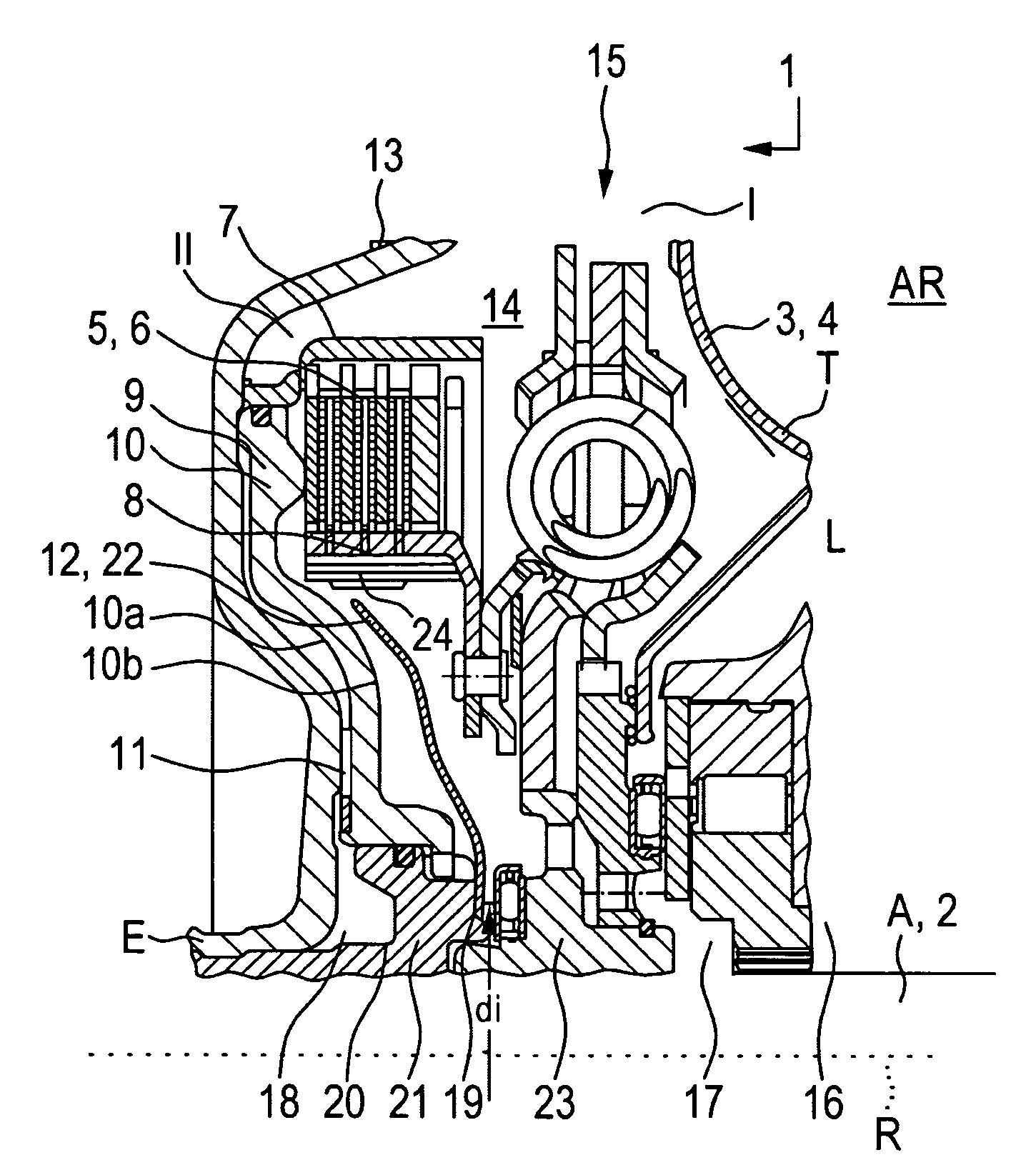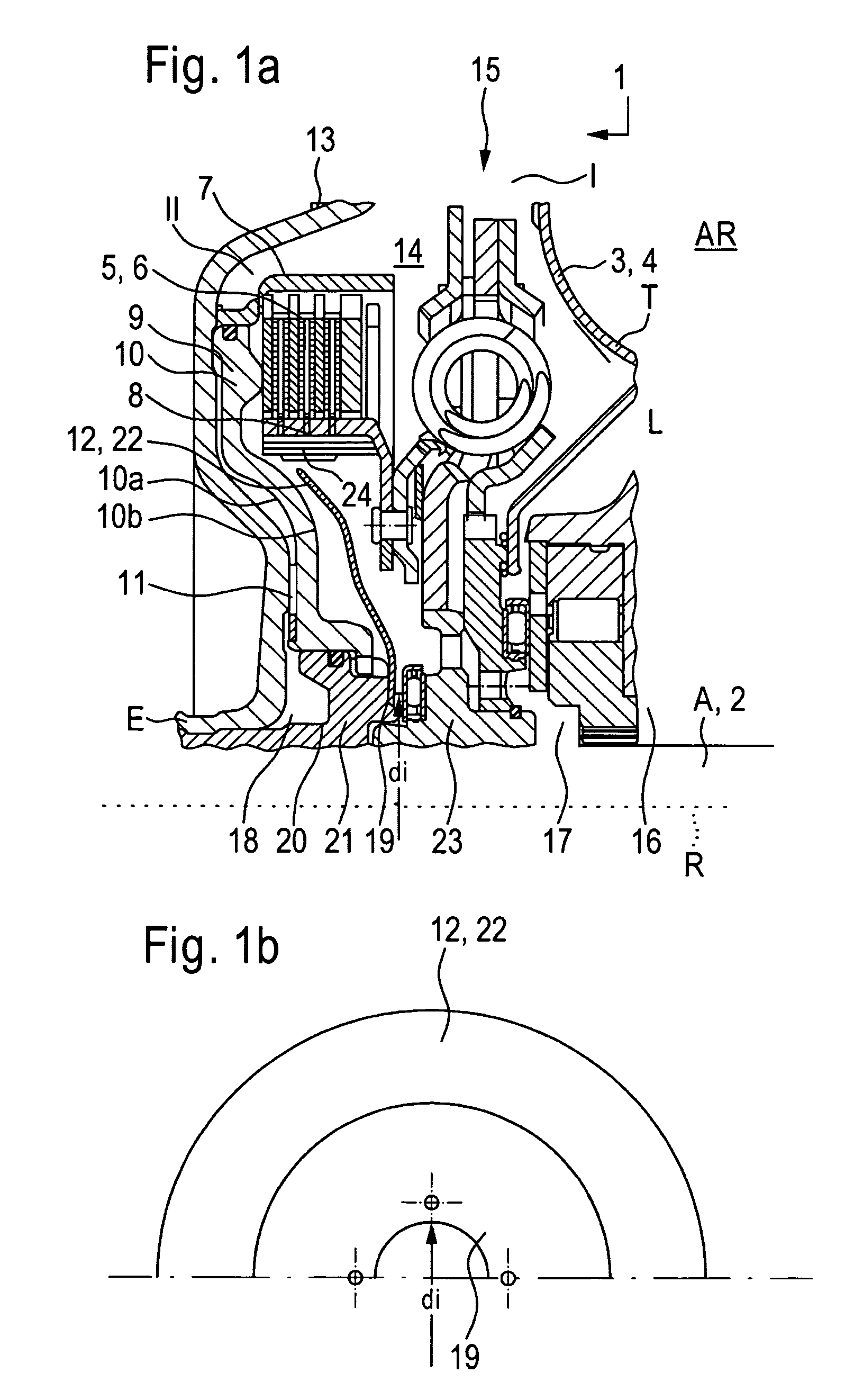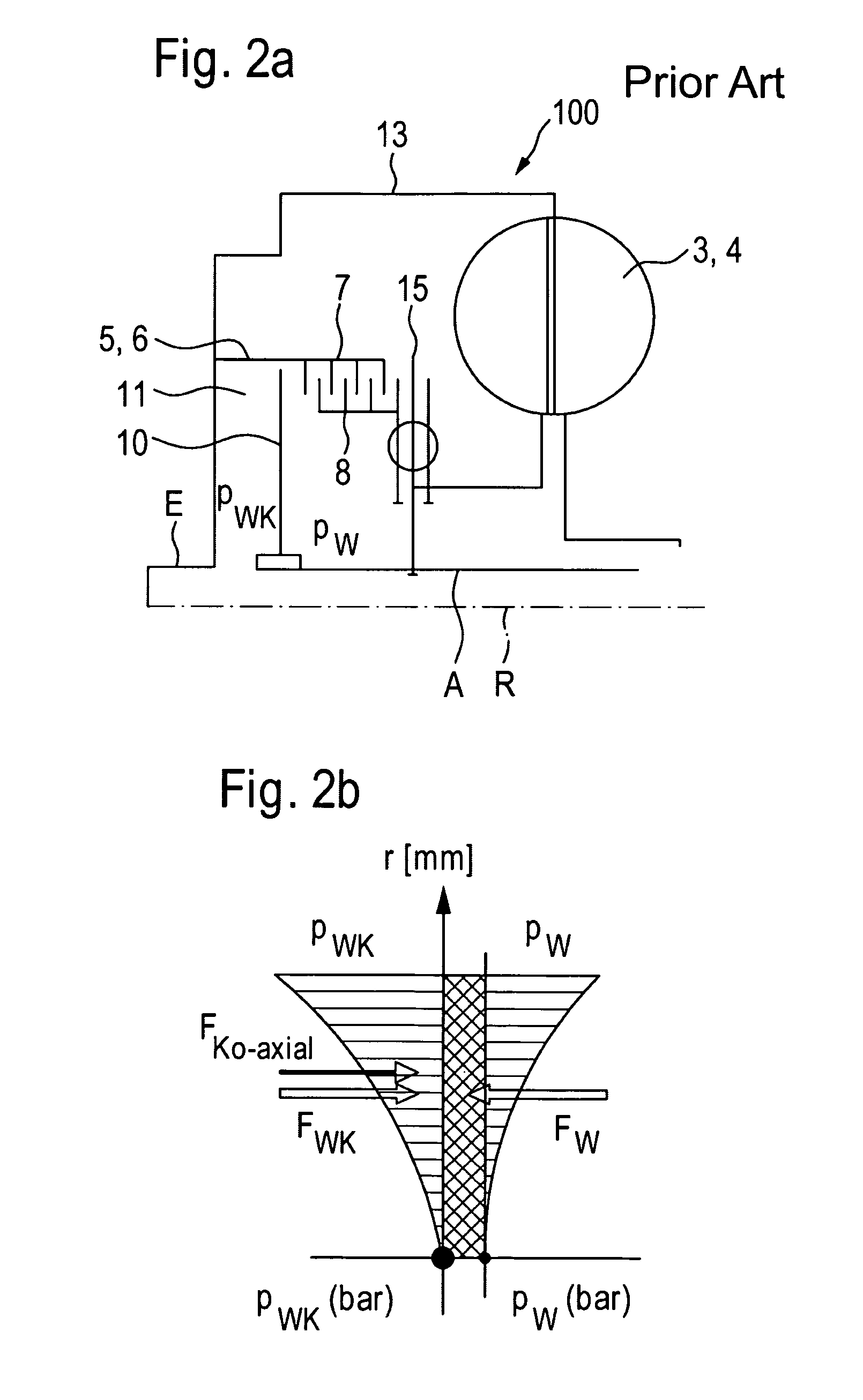Power transmission mechanism
a transmission mechanism and power technology, applied in the direction of rotary clutches, fluid couplings, gearings, etc., to achieve the effect of reducing hydrodynamic influences
- Summary
- Abstract
- Description
- Claims
- Application Information
AI Technical Summary
Benefits of technology
Problems solved by technology
Method used
Image
Examples
Embodiment Construction
[0024]FIG. 1a illustrates, in a schematically simplified depiction in an axial sectional view, a power transmission mechanism 1 designed according to the invention for use in power trains, in particular in power trains of vehicles, between a driving engine and an output drive. The output drive is normally formed by a transmission, not depicted here. Power transmission mechanism 1 assumes the function of power transmission, as well as of a speed variator / torque converter within certain bounds. To that end, power transmission mechanism 1 has at least one input E and one output A. Input E is couplable at least indirectly with a driving engine, not shown here, while output A can be connected to a take-off, normally the gear unit downline from the power transmission mechanism 1. Situated between input E and output A is a hydrodynamic component 3. The latter includes at least one primary wheel (not shown) which functions as a pump wheel when power is transmitted between input E and output...
PUM
 Login to View More
Login to View More Abstract
Description
Claims
Application Information
 Login to View More
Login to View More - R&D
- Intellectual Property
- Life Sciences
- Materials
- Tech Scout
- Unparalleled Data Quality
- Higher Quality Content
- 60% Fewer Hallucinations
Browse by: Latest US Patents, China's latest patents, Technical Efficacy Thesaurus, Application Domain, Technology Topic, Popular Technical Reports.
© 2025 PatSnap. All rights reserved.Legal|Privacy policy|Modern Slavery Act Transparency Statement|Sitemap|About US| Contact US: help@patsnap.com



